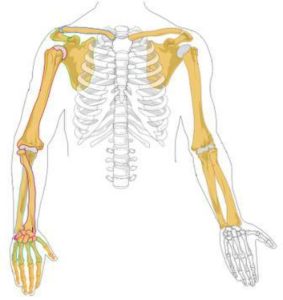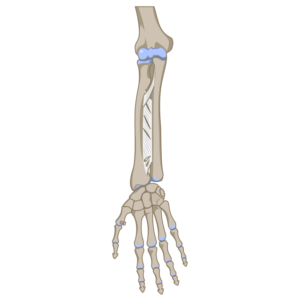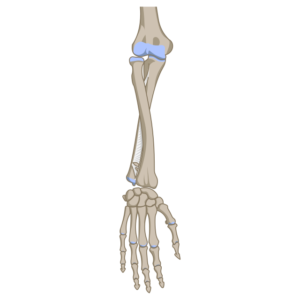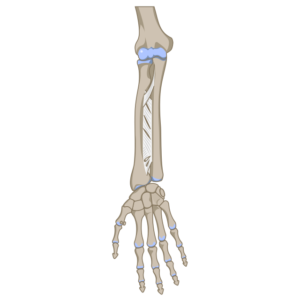 .
. 
I find the forearm and wrist to be amazingly complex and difficult to get my head around.
Sometimes pictures tell a better story.
The forearm is two bones, radius and ulna, between the humerus (arm) and wrist.
The Radius is on the outside or thumb side of the forearm and the ulna is on the inside or pinky side of the forearm.
They articulate with each other at both ends but only the radius moves with the wrist due to a disc between the ulna and the wrist. The elbow joint allows the ulna and radius to move with the humerus, and the articulation of the ulna with the humerus forms the truest hinge joint in the body.
The interosseous membrane, connecting the two bones together, means that they can’t move independently.

In terms of movement the forearm can both pronate and supinate. Supination is when the palm faces up with the thumb turned to the outside of the body and the radius and ulna are parallel.
Pronation finds the radius and ulna crossed over one another with the palm facing down.


In the last post about finger exercises I mentioned turning a screwdriver, an action dependent on the both pronation and supination.
The turning of a screw is often accomplished without involving the humerus but you can add the arm, shoulder girdle and trunk for more complex movements like scratching your back if you need to.
The degree of intricate movements of the forearm, wrist and hand far exceed those available in the shin, ankle and foot.
The design of the foot is meant for stability and supporting weight while the forearm and hand are about flexibility and variety of movement.
The forearm contains many muscles— twenty to be exact—most of which act on the hand and wrist.
There are four that are involved with supination and pronation—pronator teres, pronator quadratus, brachioradialis, and the supinator. The biceps brachhi, a muscle of the upper arm also supinates the forearm.
